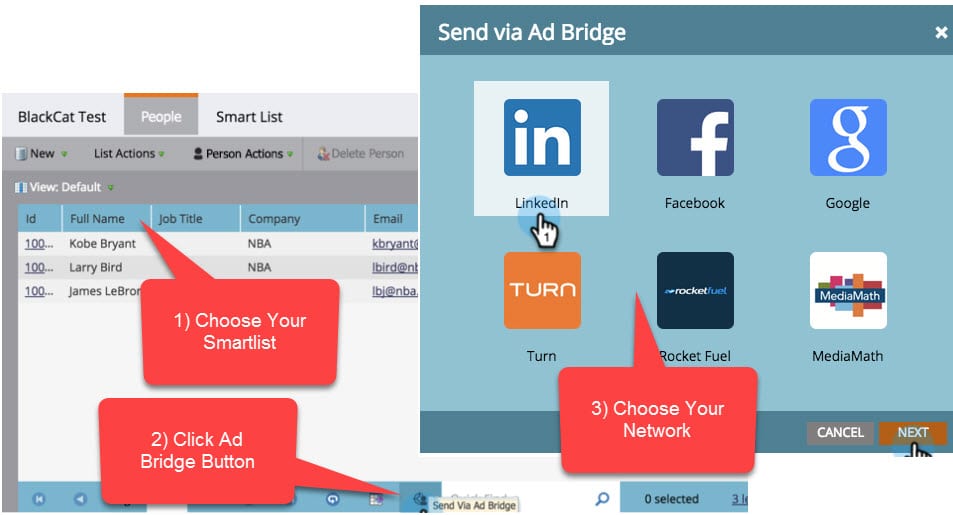Facebook Lookalike Audiences are a fantastic way to leverage the most popular social media network in the world.
Lookalike Audiences are a staple in most Facebook Ads accounts.
With the large amount of information Facebook has on its users, it’s hard to beat the algorithm when it comes to targeting new customers.
All of that said, Lookalike Audiences can wear out over time.
When Facebook advertises to users through a Lookalike Audience, it prioritizes those users who behave most like the users in our lists and most likely to convert (i.e., the lowest hanging fruit).
Over time, the Lookalike Audience will expand to folks who are less like those in our audiences and are less likely to convert.
Sometimes performance holds stable and continues to meet KPIs, but in some cases, performance can wane and fall out of goal range.
It’s up to us as advertisers to prevent this by continually providing fresh audiences for the algorithm to operate on so it can find new users to introduce to our brands.
Below are some strategies to help you keep your root audiences fresh so that your look-alike models can continue to perform well month after month after month.
1. Upload New Customer Lists Regularly
One of the most common uses of Facebook Lookalike Audiences is for a company to upload a list of their customers then create a lookalike off of that list.
This is a fantastic place to get started.
I encourage you to use this audience as long as you can.
But it’s only the first step.
Facebook will always prioritize the lowest hanging fruit.
If used for too long, the original customer list that was uploaded could wear out its effectiveness and miss KPIs.
The easiest way to get around this is to regularly upload new customer lists and create new Lookalike Audiences.
This could be as simple as importing a list of customers once a month or once a quarter.
When you do this, Facebook’s algorithm is constantly getting a list of users that have value to you, but that also has new customers included, making the model more advanced with each upload.
Simply uploading a new list of customers each month or quarter can make a big difference in your Lookalike Audience performance.
2. Segment Customer Lists into Smaller Groups
Not all customers are created equal.
Some customers have a higher lifetime value than others.
With Lookalike Audiences, you can take advantage of those differences within your customer base and come up with more advanced lookalike models.
Are there natural segmentations within your customer base you could use to create multiple root audiences from?
In ecommerce stores, a natural segmentation could be average customer value.
If the average order value for a store is $100, create a customer list for all users who have made purchases under $100 and a second customer list for users over $100.
This is a simple segmentation, but now Facebook is looking for two different sets of users:
- One that behaves like the lower revenue user.
- Another for the higher revenue user.
Lead generation companies also have natural breaks based on the buyer funnel.
What if you take the different stages of the funnel and create different custom audiences based on those segments?
There would be a list of:
- Customers.
- Opportunities.
- Sales accepted leads.
- Marketing qualified leads.
- Any other segmentation that’s valuable.
If you’re only uploading one list and calling it “customer list”, stop and take a look at the customer base and try and find natural segmentation within it.
A Note on Audience Size
One indicator when lists can be segmented more granularly is audience size.
Facebook reps officially say the sweet spot for root audience size for lookalike modeling is anywhere between 10,000 and 50,000 users.
That said, there are lots of instances where audiences as small as 300 users have generated strong lookalike models for a period of time.
Ideally, you can have somewhere in the 1,000 to 5,000 range but don’t let us small audience size scare you off.
The bigger opportunity comes when you have large audiences. Though the top end of the recommended range is 50,000 users, that doesn’t mean segmentations can’t be identified at lower levels.
If you have 30,000 users in a list, see if you can break it down into two 15,000 user list or three 10,000 user lists.
This would give three Lookalike Audiences instead of one, all focused on the lowest hanging fruit and increasing chances of success.
3. Utilize Automatic CRM Uploads
Depending on which CRM system you use, there may be automatic integrations from that platform into the Facebook API.
MailChimp is the only option shown in the audience creation process, but other platforms (e.g., Marketo) also have direct integrations.
The strategy is to leverage these direct integrations to save time on manual list building, exporting, formatting, and uploads into the Facebook system.

4. Utilize Dynamic Audiences for Lookalike Modeling
One of the best ways to keep Lookalike Audiences fresh is to base them on dynamic lists rather than customer file uploads.
Although customer lists can be automated, there’s still a time period where they are stagnant.
If you’re using the Facebook pixel, and you should be, you’ve already done most of the work.
The next step is to create audiences based on the way people interact with your site and then use those to develop lookalikes.
The beauty of these audiences is that they are constantly changing based on the user behavior.
The new users will be added to the model when the Lookalike Audience refreshes, ensuring the root list doesn’t go stale.
5. Customize Your Pixel for More Meaningful Patterns
Similar to customer lists, you can upgrade our dynamic lists through simple audience segmentation.
We do this through customizing the Facebook pixel set up to identify those meaningful user categories.
Facebook provides many standard events on the platform that likely will cover all of your needs, but if it does not, you can also use custom events with a more advanced set up of the pixel.
The standard events available are likely ones you’ve seen before:
- AddToCart
- AddPaymentInfo
- CompleteRegistration
- InitiateCheckout
- Lead
- Pageview
- Purchase
- Subscribe
- ViewContent
…and so on.
Each of these actions can then be leveraged to create a custom audience that can then have a Lookalike Audience based off of.

Additionally, the Facebook platform is getting more advanced with the new Lookalike Audience creation process as seen below:

This new method doesn’t require you to create an audience, but rather simply generated a Lookalike Audience from those users who have triggered the pixel.
This is a relatively new functionality, so it’s not in all accounts yet, but keep an eye out for it in the future.
Although adjusting the Facebook pixel can be a bit intimidating, if done well it could yield fantastic, dynamic root audiences for Lookalike Audiences.
Conclusion
Lookalike Audiences can be a powerful tool for advertising on Facebook, but the root audience of those lists should not fall into our “set it and forget it” mentality.
With regular updates or expansions of root audiences, you’ll be able to reap the benefits of them for longer and see greater success from the platform as a whole.
More Facebook Marketing Resources:
- 4 Powerful Facebook Ads Targeting Options
- How to 7x Your ROAS with Facebook Click-to-Messenger Ads
- Top 5 Advantages of Facebook Marketing for Your Business
Image Credits
Featured Image: Pixabay.com
Screenshots taken by author, September 2018





![AI Overviews: We Reverse-Engineered Them So You Don't Have To [+ What You Need To Do Next]](https://www.searchenginejournal.com/wp-content/uploads/2025/04/sidebar1x-455.png)